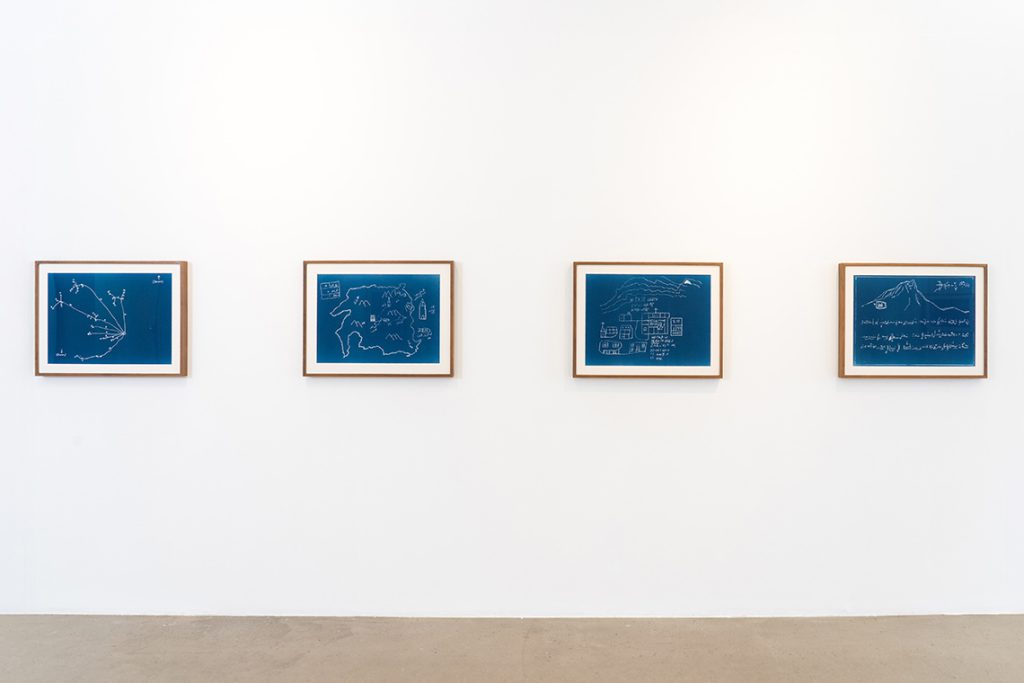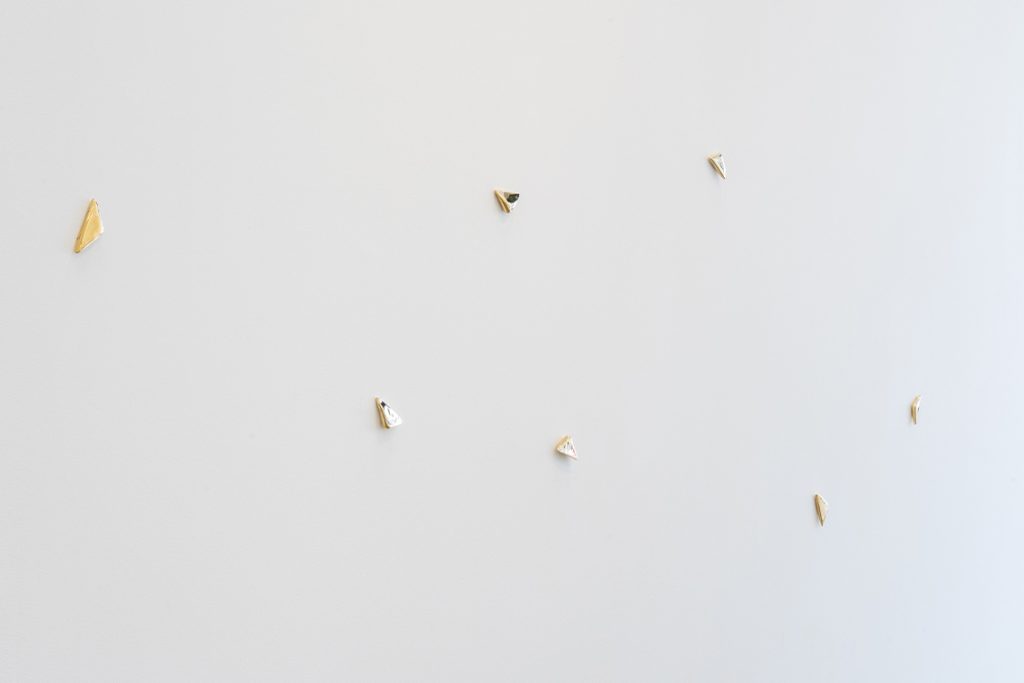At Marfa’ Projects, A Curse that Turns Gold into Ladybugs by Vartan Avakian examines Armenian history and dispossession through maps and symbols connected to the myth of hidden Armenian gold.
Marfa’ Projects sits on the outskirts of the Beirut Port District in a quiet cul-de-sac. A few weeks ago, the area was filled with visitors for the opening of Vartan Avakian’s latest exhibition, A Curse that Turns Gold into Ladybugs. This absorbing and cryptic show presents a body of work that emerged after Avakian embarked on a trip to his family’s village in eastern Türkiye. Before he headed there, family members advised him not to reveal that he was Armenian. This warning emerged from accounts of Armenians facing problems when visiting their ancestral towns in the east of Türkiye, with locals often accusing them of coming back to reclaim Armenian ancestral gold.
The fetishisation of Armenian gold is a long-held practice in Türkiye. It rests largely on the belief that Armenians must have hidden their possessions and valuables before being killed or expelled from their land during the Genocide. In order to try and locate the gold allegedly left behind, Turkish treasure hunters have since obsessed over Armenian maps as a way of trying to locate places in which to search.
Original hand-drawn maps are thus central to Avakian’s exhibition. The series titled Treasure Maps for Haunting Landscapes I-XVII (2025) exhibits 17 historical Armenian maps collected by Avakian. The pieces have been reproduced as cyanotype on cotton paper, with etchings, symbols and writing appearing white against a solid blue background. Upon entering, visitors are first confronted with Treasure Maps for Haunting Landscapes II to their left. The work is peppered with comprehensible symbols – some resemble huts or small dwellings, another appears to depict a small church. Treasure Maps for Haunting Landscapes III contains a series of trees depicting a forest or woodland, while a graveyard nearby is filled with headstones. In Treasure Maps for Haunting Landscapes XII we can make out two chickens pecking at some grain and a cow drinking from a body of water – both intelligible markings that likely point to the presence of a farm. These images, nodding to scenes of domestic and village life, preserve the memory of these ancestral towns. Suspended in time, the maps act as a tool of remembrance and point to the extent of Armenian dispossession in the face of Turkish violence.

Throughout the maps there are also mysterious markings. In Treasure Maps for Haunting Landscapes II, viewers are confronted with an unidentifiable three-headed animal, its numerous faces awash with smiles. Puzzling symbols continue to appear in other maps; in Treasure Maps for Haunting Landscapes XII two snakes appear interwoven around each other, while Treasure Maps for Haunting Landscapes III depicts a triangle and two plus signs inside a mountainous range.
Various crosses and keys can be found across the maps, their presence seemingly suggesting the location of potential treasure. These markings, perplexing and peculiar in their character, serve to outline the mystifying nature of the cartography. One can quickly imagine an individual spending several futile years poring over these obscure symbols in an attempt to profit from Armenian dispossession.
The duality of the maps is further outlined by the written text that they feature. Unintelligible script is present throughout the series, often resembling Arabic, Turkish or Armenian. Distorted to such a degree that it is largely unidentifiable, the script points to how these pieces have been circulating in unfamiliar hands for over a hundred years. Repeatedly redrawn and copied by those who did not understand the language, the maps – designed to be ancestral pieces passed down through generations – are now noticeably marked by the treasure hunters themselves. The viewer is thus reminded of both the extent of Armenian dispossession and the prevalence of a Turkish conspiracy theory that dominates the popular psyche.

Interspersed between these maps are three installations titled Hmayk (Charms, Curses and Spells) (2025). The pieces nod to the belief that Armenians would place spells on their treasure in order to protect it. Over the years, accounts emerged that treasure hunters successfully located Armenian gold only for it to instantly turn into bees or ladybugs. Avakian’s talismans hold a series of historical spells, including protection against thieves and property; one talisman holds a spell “to fold a thief’s path seven times into itself”, while another instructs “to turn evil tongues into wool”. A traditional technique involving the etching of spells onto rice paper before being encased in a sturdy material has been used by the artist. In this case, the talismans are wrapped in glittering gold brass. These shimmering charms cleverly evoke both the themes of ancestral treasure and protection. We are reminded that, despite laying claim to Armenian wealth, there are often greater – and perhaps mythical – ethical guidelines at play.
Towards the back of the exhibition is a video installation titled Waswas. Here, a haunting video plays out of someone searching through an unidentified area. The camera is pointed downwards, as if taken from the view of the searcher; we see his feet walk over rocks, suddenly leaning down as if to peer closely at the ground. Suddenly, the camera swings around, the hunter hurried and eager as he looks through foliage. On a separate screen is a clip from a news conference. Dating back to 2022, the video shows Kadir Janpolat, head of the Ottoman Hearths, a nationalist organisation in Turkey, claim that Armenian gold could boost Turkey’s economy tenfold. This video, which reframes the Armenian Genocide as a potential asset for Turkey, adeptly illustrates how the violence of the past remains unresolved. By underlining the persistent desire to monetise from genocide, A Curse that Turns Gold into Ladybugs reminds the viewer of the recurring dispossession and violence perpetuated against the Armenians.



